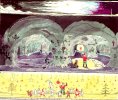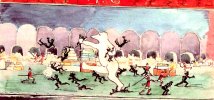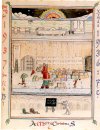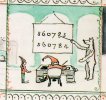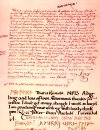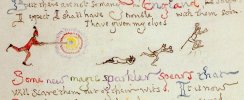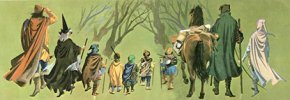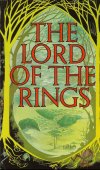In my previous post, I included a link to some notes I made about this topic after briefly studying a 2004 printing of Tolkien's Letters from Father Christmas. I'm not sure people were able to use that link, so I attach an PDF file containing an updated version of those notes here.
I've also scanned several of the pictures from those letters that seem relevant. But as it's late now, I'll add them later.
In brief, I believe that a study of Letters from Father Christmas is helpful for understanding Tolkien's Middle Earth writings. That book contains not only Father Christmas, but a magical, man-like bear, fireworks, gunpowder, goblins, goblin caves and cave art, battles with goblin extending over several years, various distinct elven groups, some silly and others serious, poetry (and commentary on it), various languages and writing forms, including some that are clearly part of Middle Earth. It includes Tolkien's illustrations of goblins and elves, revealing how he pictured them at the time that The Hobbit was published and he was beginning The Lord of the Rings. There is a lot there, and I believe it worth exploring.
As far as I can tell, when you click on my attached document, it will download a copy and then you have to look at your downloads to find and read it. I hope people do so.
I've also scanned several of the pictures from those letters that seem relevant. But as it's late now, I'll add them later.
In brief, I believe that a study of Letters from Father Christmas is helpful for understanding Tolkien's Middle Earth writings. That book contains not only Father Christmas, but a magical, man-like bear, fireworks, gunpowder, goblins, goblin caves and cave art, battles with goblin extending over several years, various distinct elven groups, some silly and others serious, poetry (and commentary on it), various languages and writing forms, including some that are clearly part of Middle Earth. It includes Tolkien's illustrations of goblins and elves, revealing how he pictured them at the time that The Hobbit was published and he was beginning The Lord of the Rings. There is a lot there, and I believe it worth exploring.
As far as I can tell, when you click on my attached document, it will download a copy and then you have to look at your downloads to find and read it. I hope people do so.
Attachments
Last edited:



